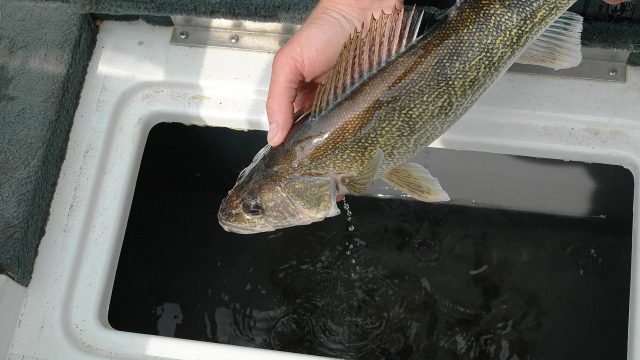Doug Leier: Are Slot Limits Needed For North Dakota Fisheries?

I’m no master angler, but I do understand how anglers will successfully use a technique, lure or presentation on one lake, and then try that same strategy on another body of water.
In similar fashion, fisheries managers often hear from anglers who fish in other states who wonder why specific regulations are applied in those states and not North Dakota, and vice versa. One of the more frequent conversations involves “slot limits.”
North Dakota doesn’t currently have any slot-limit regulations, and most fisheries managers will tell you that a slot limit is likely the most misunderstood of fish size restrictions, such as minimum or maximum length.
As has been the case for a couple of other columns over the past few weeks, I’m drawing on the article “Weighing the Effects of Length Limits,” published in the May 2013 issue of the North Dakota Game and Fish Department’s magazine, North Dakota OUTDOORS.
Most anglers refer to a slot limit as a harvestable size range, say, from 14 to 20 inches.
What fisheries biologists more often refer to as a slot limit, is a protected slot where anglers must release fish within the slot range, and harvest is limited to smaller and larger fish. Since protected slots typically prohibit anglers from harvesting fish of sizes they most prefer, such regulations are probably the least popular of all.
However, in some waters they are also beneficial.
Imagine a walleye population that experiences consistent reproductive or stocking success, but has limited food resources so the abundant small fish don’t grow very fast. Now throw in a lot of angling pressure, and the few fish that do reach harvestable size are quickly cropped off, with few fish making it to larger sizes.
A protected slot limit is designed to alleviate some of this and produce a more balanced size structure in a couple of ways. First, since anglers can’t harvest mid-sized fish, they would be more likely to harvest smaller fish, in turn thinning the density of small fish and increasing the growth rate of remaining fish. Then, as those fish are growing faster, they are protected from harvest when mid-sized, allowing them to reach longer lengths than before.
In North Dakota, because Lake Sakakawea’s walleye population is currently thriving, and has a desirable mix of walleye sizes, a protected slot limit is not warranted.
On Lake Oahe and the Garrison Reach of the Missouri River, the walleye population includes abundant small fish, and growth has slowed while mortality has increased. However, a more restrictive regulation would not address underlying forage problems impacting the fishery. A slot limit would needlessly restrict harvest, and possibly create more problems by increasing the walleye population density and thereby increasing competition for food at a time when forage is extremely limited.
At Devils Lake, fishing effort is high at times, but Game and Fish studies indicate harvest and mortality rates from fishing are not extreme, and natural mortality is likewise moderate. Applying a slot limit to this population is not biologically necessary, but Game and Fish biologists continue to evaluate the walleye fishery to determine if special regulations are at some point necessary.
The discussion on fish management from state to state, and even from lake to lake is as diverse and dynamic as the technology anglers use. The discussion topics may change, but the passion of anglers will remain. And that’s a good thing.




